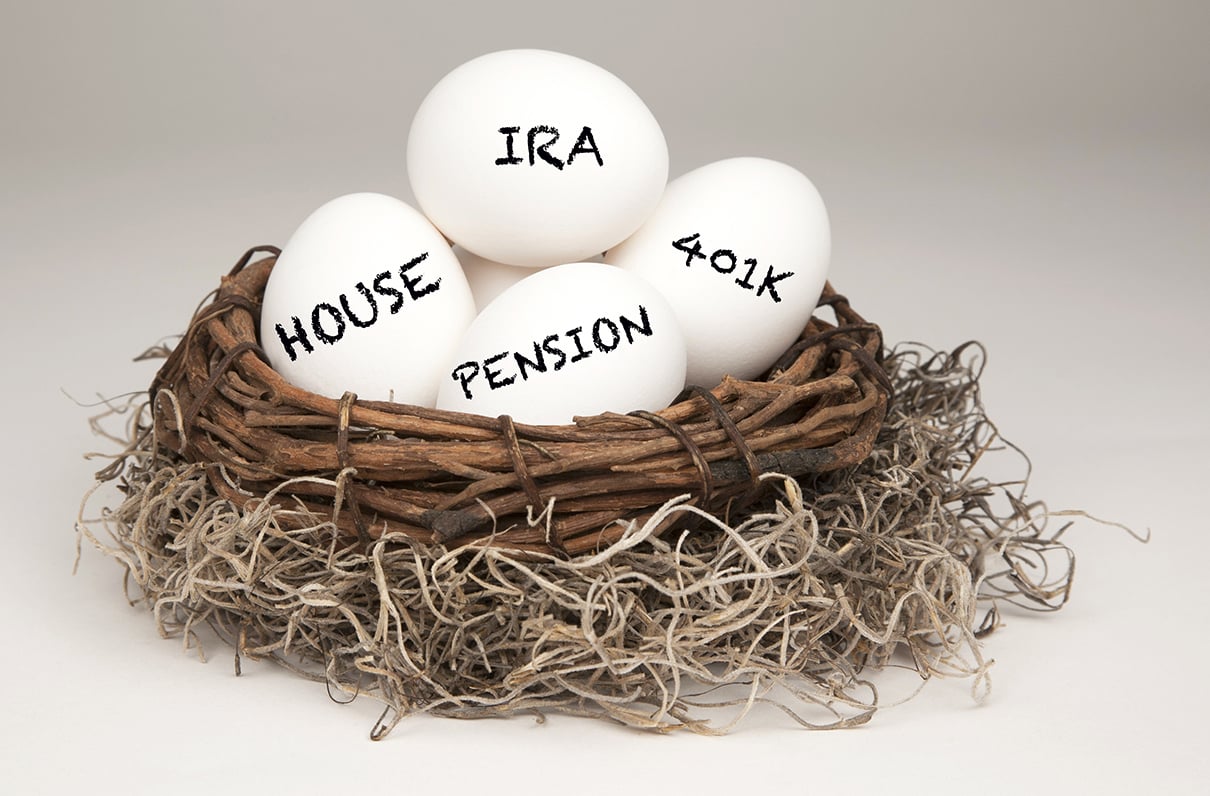The advice is all over the map when discussing which type of retirement account is best for accumulating your retirement wealth.
One common pearl of wisdom I hear is: "Contribute to your 401k/TSP to get the company match money but that’s all. Contribute the rest of your money to your Individual Retirement Account (IRA)."
Generally, when you hear advice, follow the money. Ask whose getting paid by following the advice so you understand the source of their advice.
Just so you know we have no conflict of interest in this debate. We are not a financial service firm. We don’t sell investment products nor do we provide any types of accounts. We don’t have clients so we are not trying to recruit you. We are counselors and educators. We don’t care where you go for help or what you purchase. Our desire is to help you be a better investor and make the wisest consumer selections for your needs.
Below is a breakdown of various account features. I suggest a winner for each feature. Follow along and see how your situation fits in the discussions below.
Contribution amounts: 401k/TSP wins.
The maximum contribution for a 401k/TSP is $18,000 (or $24,000 for age 50 and older).
Traditional IRAs only allow contributions up to $5500 ($6500 for age 50(+)).
Roth IRAs are the same as Traditional IRAs until you start hitting the annual income restrictions. The income restrictions are $116-131k for single tax filers and $183-193k for married tax payers filing jointly. The income restrictions slowly decrease the maximum contribution amount until contributions are prohibited after exceeding the highest amount in the income range.
Granted the income restrictions on the Roth IRA are not hit by most folks but there are still limits. Neither version of 401k/TSP has income restrictions. On the other hand, anyone can contribute the maximum amount to either version of 401k/TSP regardless of income.
There are a few IRA-type company retirement plans and self-employed plans that allow more than $5500/6500 but they are still less than $18/24,000. One only accepts employer’s contributions.
Employer matching funds; the icing on the cake. If your employer matches, you have an immediate positive return on your money and you are compounding larger amounts over time—think of a snow ball rolling down a mountainside. Be aware of your employer’s vesting schedule. A vesting schedule determines how much of the company’s matching amount you get to keep if you leave the firm. The amount you keep goes up the longer you are employed.
Tax advantages: 401k/TSP wins.
Roth: People who contribute to a Roth want their tax advantage in retirement; not now.
You get a greater future tax advantage contributing to a Roth 401k/TSP with the $18/24k maximum contribution amount and no income restrictions like a Roth IRA as explained above. Given the ability to contribute over 3-times more to a Roth 401k/TSP per year (almost 4-times as much if you are age 50 or older) than an IRA, the compounded tax advantage in retirement is remarkable.
Roth 401k/TSPs do have mandatory Required Minimum Distributions (RMD) at age 70½. Do a direct transfer of your Roth 401k/TSP to a Roth IRA and the tax benefit can go on for life since Roth IRAs have no RMD.
Traditional: People who contribute to a Traditional plan want their tax advantage now; not later.
A Traditional 401k/TSP gives you the full deduction off your current taxable income up to the $18/$24k maximum contribution unlike a Traditional IRA.
Traditional IRA contributions can be deducted off your income taxes up to the $5500/$6500 maximum but there’s a catch. First neither you nor your spouse can be covered by an employer retirement plan to get the full deduction. If you or your spouse is covered by an employer retirement plan, your deduction decreases based on your income amount. Single tax filers start to lose their IRA deduction starting at $61k in income and after $71k you lose your deduction for IRA contributions. For married filing jointly the income range limit starts at $98k and after $118k you cannot deduct your contributions.
You can still contribute up to the $5500/$6500 maximums but the contributions aren’t fully deductible or they cease. In this case, your non-deductible contributions will not be taxed at withdrawal in retirement. Any gains from the non-deductible contributions are taxable.
Investment options: IRA wins.
I’m basing this IRA win on the assumption that you have the right IRA. Your IRA should have access to all possible investment options even though you won’t use all the options. We know the TSP is limited to six options (C, S, I, F, G, and L) so in this competitive category a TSP should be easy to beat.
If you have a CD IRA (a CD in an IRA wrapper), this isn’t a win for your IRA. Neither is an IRA linked to one or a few mutual funds. If your IRA is in a life insurance or annuity product (why would you do this?), it depends on the options made available to you in your insurance plan.
Costs: TSP wins hands down.
The TSP is so inexpensive it’s practically free.
If you don’t have a TSP, things can get competitive between 401ks and IRAs. It depends on your IRA primarily.
Your 401k expenses depend on your program and how much your employer makes you pay to cover the administrative fees. You don’t control these costs. These expenses can be all over the map. If your 401k is with an insurance company, you are probably paying more. This is why I believe the IRA comes in second after the TSP.
You can control your IRA expenses by opening the right IRA. While the right IRA will be a bit more expensive than a TSP, it will still be very inexpensive.
Ease of management: IRA wins.
Again I have to make the assumption you have the right IRA. The right IRA is easily managed on-line. The account set-up, investment transactions, money transfers are all at the touch of a few key strokes.
401k/TSP can be easy in some ways because many functions are on-line but you also have the administration involved with the employer’s policies and the plan documents.
Required Minimum Distributions: Roth IRA wins.
Every retirement account other than a Roth IRA has a RMD obligation at age 70½.
If you have a Roth 401k/TSP, you can manage around the Roth 401k/TSP RMD by directly transferring the Roth 401k/TSP to a Roth IRA prior to age 70½ and thereby eliminating the RMD requirement.
Wealth building potential: 401k/TSP win.
No question here. Up to $18/24k compounding each year or $5500/6500 compounding each year. Roth IRAs contributions will be restricted even further by the by the income restrictions noted above.
- $5500 a year by 20 years at 7% return equals $225,500.
- $18k a year by 20 years at 7% return equals $738,000.
The Final Tally
The bottom line for me is that you max-out your 401k/TSP each year before you contribute to an IRA. Because most employees can’t max-out 401k/TSP contributions each year, you should have a plan to get there eventually. Every cost-of-living-increase, promotion, raise, job change, anytime you have an income increase, increase the amount of your 401k/TSP contribution until you are able to max-out your program.
That’s it. Where do you stand? Are you questioning whether you have the proper IRA for your needs?



